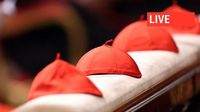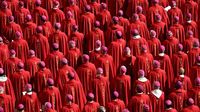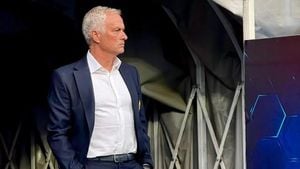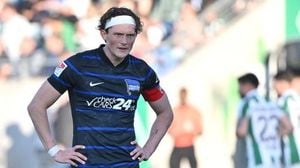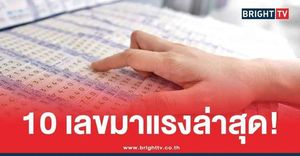On May 7, 2025, a historic conclave commenced at the Vatican as 133 cardinals from 70 countries gathered in the Sistine Chapel to elect the successor to Pope Francis, who passed away on April 21, 2025. The cardinals, representing a diverse array of backgrounds and perspectives, are expected to engage in a rigorous and secretive selection process, with hopes of concluding their deliberations within three days.
The anticipation surrounding this conclave is palpable, not only among the faithful but also among the global media, with approximately 5,000 journalists covering the event. This conclave is particularly significant as it marks the first papal election following the death of a pontiff who was both revered and controversial. Pope Francis, known for his progressive stances, left behind a complex legacy that will undoubtedly influence the cardinals' discussions.
As the day unfolded, the cardinals participated in a solemn mass at 10:00 AM in Saint Peter's Basilica, led by Giovanni Battista Re, the dean of the College of Cardinals. This mass, named "Pro Eligendo Romano Pontifice," set a solemn tone for the proceedings to come. Following the mass, the cardinals entered the Sistine Chapel around 5:00 PM, where they would be isolated from the outside world, adhering to strict protocols designed to ensure confidentiality.
The Vatican has implemented measures to maintain the secrecy of the conclave, including cutting the telephone signal within the city-state. This decision, announced on May 5, 2025, underscores the Vatican's commitment to safeguarding the integrity of the election process. The cardinals are prohibited from using mobile phones or any form of communication that could compromise their deliberations.
During the conclave, the cardinals will vote in a series of rounds, with the first vote expected to take place on the evening of May 7. Results from this initial round are anticipated around 7:00 PM. If no candidate receives the required two-thirds majority—89 votes—the election will continue into the following days, with additional rounds scheduled for May 8.
The demographics of the conclave reflect a significant shift in the Catholic Church's global representation. Among the 133 cardinals, 52 hail from Europe, constituting 39% of the voting body. This is a decrease from the previous conclave in 2013, which saw 60 out of 115 cardinals from Europe. The conclave also includes 23 cardinals from Asia, 21 from South and Central America, 17 from Africa, 16 from North America, and 4 from Oceania.
Notably, Italy has the highest representation with 17 cardinals, followed by the United States with 10 and Brazil with 7. France contributes five cardinals, while Argentina, Spain, Canada, India, Poland, and Portugal each have four representatives. Belgium is represented by two cardinal-electors, Mgr Jozef De Kesel and Mgr Dominique Mathieu.
The average age of the conclave participants is 70 years and 3 months, with the oldest being Carlos Osoro Sierra, who will turn 80 on May 16, 2025. The youngest participant is Mykola Bychok, the Archbishop of Melbourne, who recently celebrated his 45th birthday.
This conclave is characterized by its international scope and the potential for a new direction within the Church. The cardinals have been engaging in preparatory discussions, known as "general congregations," to outline the challenges facing the Church and the qualities desired in the next pope. Issues such as sexual abuse scandals, crisis of vocations, and the role of women in the Church are at the forefront of these discussions.
As the cardinals prepare to cast their votes, the question of who among them will emerge as the new pope remains uncertain. Several names have been floated as potential successors, including Pietro Parolin, Pierbattista Pizzaballa, Mario Grech, Jean-Marc Aveline, and Luis Antonio Tagle. However, the outcome is shrouded in mystery, and the possibility of a surprise candidate cannot be ruled out.
In addition to the internal dynamics of the Church, external geopolitical factors may influence the election. With the rise of populism and shifting global alliances, some cardinals may advocate for a leader who possesses strong diplomatic skills and experience in international relations.
As the conclave unfolds, millions around the world will be watching closely, awaiting the moment when the white smoke signals the election of a new pope. This event, steeped in tradition and secrecy, is not just a religious ceremony but a pivotal moment for the Catholic Church and its 1.4 billion followers.
In this age of rapid change and uncertainty, the next pope will be tasked with addressing numerous challenges while also uniting a diverse and often divided Church. The coming days will reveal not only the identity of the new sovereign pontiff but also the direction in which the Catholic Church will head in the years to come.
